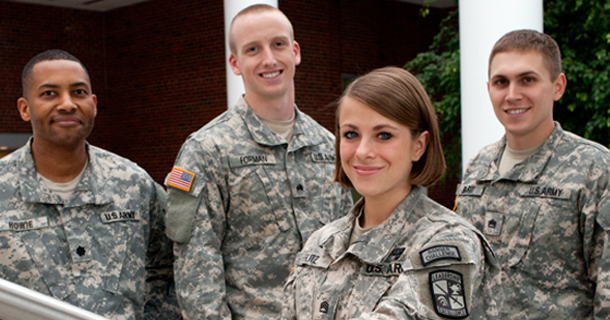
By Jillian Ventrone
Higher education is complicated enough without throwing veterans’ benefits into the mix. Many service members want to attend college on their GI Bills but are unaware how to get started. There are so many different factors to consider, for example: how to choose a degree that matches an individual’s career goals, which benefits to use, and what type of institution to attend.
How can they become knowledgeable about these concerns? Conducting in-depth research prior to making a final decision is the only way. During the information gathering stage, veterans will become more familiar with their available resources, higher education factors, and benefits. Multiple free resources are available to assist in this process, some based upon military service and others open to everyone.
For active duty personnel or for veterans located near a military base the best place to start is often the local education center. Counselors are available to assist with all concerns related to service members and their families’ higher education or vocational needs. This includes advice on programs, institutions, veterans’ benefits, and other financial assistance options. Some bases hold weekly briefs that outline many of these subjects. Oftentimes, you can set up a telephone appointment to seek advice from a counselor if you are located some distance from a base. This free, impartial service offers assistance with decisions as well as continued advice on your academic pursuits.
College Navigator (http://nces.ed.gov/collegenavigator/) is my go to site to begin a preliminary search for viable institutions. The free website allows users to create a personalized search for institutions that meet their personal needs. The site allows users to search based upon topics such as zip code, level of degree, type of institution, and traditional or vocational programs. Side-by-side evaluations, saved searches, interactive maps, and spreadsheet printouts allow for better comparison shopping. Students can check for school costs as well. For example, if a veteran searches for a private school and notes that the tuition is listed at $30,000 per year he now knows that attending this institution might cost him money since the Post 9/11 GI Bill currently only covers a maximum of $20,235.02 per academic year (http://goo.gl/T1N2y0). Further research would be necessary to determine if other financing options were available.
O*NET OnLine (http://www.onetonline.org/) and the Bureau of Labor Statistics Occupational Handbook (http://www.bls.gov/ooh/) are useful tools for career exploration. Can’t decide between two or three different careers? Use both of these websites to conduct solid career research. Topics such as required education levels, salary, job openings, and growth rates are covered.
If you absolutely do not know what you want to be when you grow up take the personality assessment tests offered on the military-based Kuder® Journey™ website (http://www.dantes.kuder.com/). The assessment tests will take approximately thirty minutes to complete. The results demonstrate the different types of careers choices for which you might have an aptitude. Kuder® Journey™ offers information on occupations, education and financial aid, and job search tools as well.
Jillian Ventrone, spouse of an active duty infantry Marine, has a passion for higher education. She works as a veterans’ academic counselor aboard a federal installation helping service members pursue their educational goals. She is the author of three books on veterans’ higher education that are in various stages of publishing with Rowman and Littlefield, From the Marine Corps to College: Transitioning from the Service to Higher Education, From the Navy to College: Transitioning from the Service to Higher Education, and From the Army to College: Transitioning from the Service to Higher Education.
